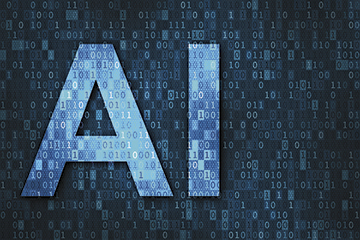By Barbara Greenwood Dafour
Many of us already use artificial intelligence — or AI — in our daily lives. Voice-activated personal assistants answer our random questions, thermostats adjust to our home heating and cooling needs, and streaming media services give us personalized suggestions. While these forms of AI provide somewhat trivial benefits, AI could have a transformative effect on health care.
AI involves the development of systems to perform tasks that normally require human intelligence, such as problem-solving, reasoning, and recognition. Rather than being explicitly programmed to perform a set of tasks, an AI system is programmed to learn from the data it receives and to perform tasks on its own according to what it has learned. This is also called “machine learning.”
AI has the potential to improve patient care and the delivery of health services across a broad range of clinical specialties. The CADTH Horizon Scanning service recently looked at current and emerging uses of AI in health care that have the potential to impact health care. CADTH is an independent agency that finds, assesses, and summarizes the research on drugs, medical devices, tests, and procedures to find out what the evidence says. Its Overview of Clinical Applications of Artificial Intelligence provides a synopsis of several AI innovations to watch.
Clinical specialties that rely on the interpretation and analysis of images — primarily radiology, pathology, and dermatology — will likely be the first to experience large-scale change from AI. Studies suggest that AI may have the potential to interpret images as well as physicians can, and might also offer other advantages. Because it can process large amounts of data without lapses in memory, emotional response, or fatigue, AI could help prevent errors in image interpretation (which are estimated to occur three to five per cent of the time).
AI tools also have the potential to diagnose disease earlier because they can become better able to identify small variances not discernible by the human eye. For example, AI has been shown to be able to identify certain characteristics of new lesions, such as border demarcation features, which are often subtle and difficult for a dermatologist to see. Similarly, AI could more efficiently track a patient’s response to treatment — for example, both detecting and recording changes in the size and density of tumours over time. AI algorithms have also been developed that make predictions about disease progression and help determine the most effective treatment.
Like voice-activated personal assistants, some AI applications use a combination of machine learning algorithms and natural language processing (which involves understanding and interpreting human language, either spoken or written) to simulate participant-clinician interactions. This is being explored as a way to deliver mental health initiatives. For example, when human moderators are not available, an online community for youth mental health has used this type of AI to assess the sentiment and emotions of participants from their posts and recommend appropriate actions to them. Natural language processing systems can also be used to transfer a clinician’s written notes into electronic medical records and to interface with patients as an automated agent, responding to and asking questions.
To reduce the risk of misdiagnosis, AI can be used to allow pathology images to be more easily shared with another lab for a second opinion. Similarly, AI can be used in telepathology so that physicians in rural and remote communities can more easily access and consult with specialized pathologists from a distance. There are also AI applications that can be downloaded to mobile devices so patients can scan their own bodies for skin moles — these applications identify moles that are suspicious and send images of them to a dermatologist for further analysis. Similar AI applications are also being used to diagnose acne, psoriasis, seborrheic dermatitis, and nail fungus.
The ways that AI is being integrated into health care are many. The CADTH overview touches on several more applications of AI not covered in this article. But whether these technologies lead to better health care and better health outcomes will depend on how successfully AI can be implemented. The issue of how easily AI can be integrated into the existing health care system is often overshadowed by concerns around the privacy and use of personal information. Ensuring that personal data will be kept safe and secure and gaining the trust of the public is necessary if AI is to be successfully and widely adopted.
If you’d like to learn more about CADTH or this horizon scan, visit www.cadth.ca. You can also follow us on Twitter @CADTH_ACMTS or speak to a CADTH Liaison Officer in your region.
Barbara Greenwood Dafour is a knowledge mobilization officer at CADTH .

